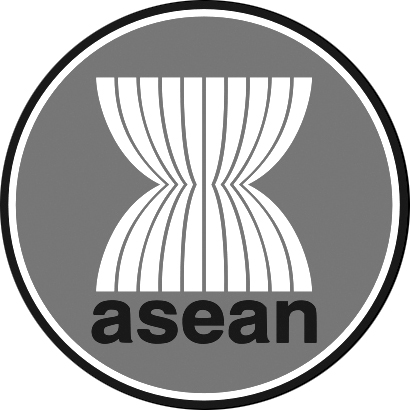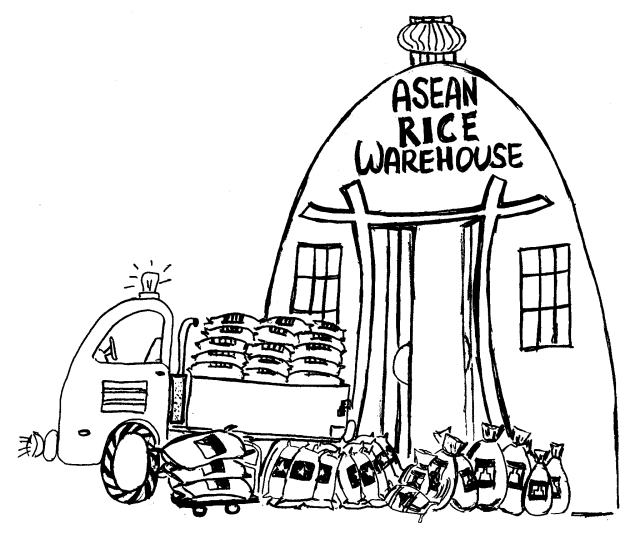As an advocate for organic agriculture, I buy organically-grown food in the market, even if they cost a little bit more than the usual. For our rice, I buy the Healthy Rice brand from the supermarket, produced by Pecuaria Development Cooperative, an affiliate of one of our members, Pambansang Kilusan ng mga Samahang Magsasaka (PAKISAMA)- National Movement and Confederation of Peasants Organisations. But when the prices of food came skyrocketing high early last year and uncertainties loomed, I found myself thinking twice, thrice even, whether to buy this organic rice which went up twice its usual price.
The as it did the maybe didhouseholds me as much price hike poorer not affect in the urban poor areas where women and children lined up for hours under the sun’s sweltering summer heat to buy subsidised rice from the Philippine National Food Authority.
 This food crisis did not mean so much to me as to maybe the Philippine president, Gloria Macapagal-Arroyo, who knew she had to provide affordable rice to the millions of poor families, if she had to stay in power as she badly does. So the government begged for Thailand and Vietnam to sell us their surplus rice, even if it cost us billions of pesos—money which could have been spent for more strategic use like improving rural infrastructures and providing adequate support services to small-scale rice farmers, so that the country can achieve rice self- sufficiency.
This food crisis did not mean so much to me as to maybe the Philippine president, Gloria Macapagal-Arroyo, who knew she had to provide affordable rice to the millions of poor families, if she had to stay in power as she badly does. So the government begged for Thailand and Vietnam to sell us their surplus rice, even if it cost us billions of pesos—money which could have been spent for more strategic use like improving rural infrastructures and providing adequate support services to small-scale rice farmers, so that the country can achieve rice self- sufficiency.
It is during these times that I feel the importance of our organisation’s advocacy work on the promotion of food security in the countries in the Southeast and East Asia region, where the Asian Farmer’s Association for Sustainable Rural Development (AFA) and most of its partners are based.
AFA is an alliance of nine national farmers’ organisations (FOs) in Asia, representing around ten million small-scale women and men farmers.
Of the countries we work with, three are in North Asia: South Korea, Japan and Taiwan while five are in Southeast Asian region: Philippines, Indonesia, Thailand, Cambodia and Vietnam. In the latter, agriculture continues to be a significant and sensitive sector. Except for Singapore and Brunei, the contribution of the sector to the total domestic output ranged from 7.9 per cent in Malaysia to as much as 50 per cent in of Lao PDR. Employing 16 to 78 per cent of the population, agriculture is still a vital source of livelihood and income especially in the rural areas.
But even as agriculture remains a vital sector in most Southeast Asian countries’ economies, the small-scale women and men farmers and producers, who form the majority of the people dependent on agriculture are still poor. In these countries, poverty is most widespread in the rural areas, where agriculture is the main source of livelihood.
 Women farmers bear the brunt, as they do 50 to 90 per cent of agricultural work in almost all crops. With less income in their purses, there is less money for food, health, and education of the whole family.
Women farmers bear the brunt, as they do 50 to 90 per cent of agricultural work in almost all crops. With less income in their purses, there is less money for food, health, and education of the whole family.
Southeast Asia is also a region of contrasts. A few countries: Malaysia, Brunei, Singapore are relatively rich, with a very small farming population. Some are middle developing countries: Thailand, Philippines, Indonesia and Vietnam. But there are still those categorised as least developing countries: Cambodia, Lao PDR and Burma. In this region, we have two of the world’s top rice exporters — Vietnam and Thailand, and the world’s largest rice importer— Philippines.
Forty-one years ago, these countries formed a regional and inter-governmental organisation called Association of Southeast Asian Nations (ASEAN). ASEAN aimed to accelerate economic growth, social progress and cultural development in the region while promoting regional peace and solidarity. The ASEAN logo then and now depicts ten rice stalks and has one of the purposes in its founding document, the development and growth of agriculture in the region.
In 2003, ASEAN leaders agreed to establish an ASEAN community, with three pillars of cooperation, subsequently formed the ASEAN Economic Community, the ASEAN Security Community and ASEAN Socio-Cultural Community.
Of the three pillars of cooperation or communities, the ASEAN Economic Community seemed to develop at a much faster speed, with the signing of the ASEAN Economic Community Blueprint in December 2007, whose primary aim is to establish a single market and production base by 2015.
But prior to the formation of the ASEAN Economic Community, ASEAN created the ASEAN Free Trade Area (AFTA) and adapted the Common Effective Preferential Tariff Scheme (CEPT) as its main mechanism for fastracking free trade in the region in 1992. By 2000, ASEAN began to negotiate for free trade agreements (FTA) with other countries and regions, so much so that it has been termed “the noodle bowl of FTA in the world,” talking bilaterally with countries such as Japan, South Korea, China, India, Australia and New Zealand, US and EU.
Asian Farmers’ Association for Sustainable Rural Development
 AFA has programmes on policy advocacy, capacity-building, management of on-ground initiatives and governance. It conducts activities related to policy information, analyses and campaigns as well as dialogues with decision-makers, both at national and regional levels.
AFA has programmes on policy advocacy, capacity-building, management of on-ground initiatives and governance. It conducts activities related to policy information, analyses and campaigns as well as dialogues with decision-makers, both at national and regional levels.
It also provides technical and managerial support to members’ initiatives on farmers’ organising and empowerment, organisational development and management, access to natural and production resources, sustainable agriculture, equity-led marketing and trading. It likewise develops projects along these areas that are implemented in selected countries.
Ever since the formative years of AFA, from 1999 to 2002, our farmer leaders have started to cast their apprehensions over free trade, as we were feeling the negative effects of the World Trade Organisation’s Agreement on Agriculture (WTO-AoA ) rules. Rapid agricultural trade liberalisation has led to massive dumping of cheap agricultural imports from developed countries and their transnational corporations, destroying the livelihoods of hundreds of thousands of farmers and agricultural workers. With no alternative sources of income and few safety nets, farmers have become poorer and more marginalised.
We are so concerned that the current integration of agriculture in ASEAN countries is following the free trade paradigm. Unabated and unchecked, the integration will further displace small scale farmers, destroy their livelihoods, and deny them their rural heritage, including the culture of agriculture.
This concern has prompted AFA to engage ASEAN. We started to dialogue with ASEAN in 2005, when we co-organised with our NGO partner Asian Partnership for the Development of Human Resources in Rural Asia (AsiaDHRRA), a session on “ASEAN and Agriculture,” attended by Dr. Azmi Mat Makhir, ASEAN’s senior agriculturist. The session was held during a Regional Conference on Civil Society Engagement in ASEAN, organised by several regional networks which included Forum Asia, Southeast Asia Committee for Advocacy (SEACA), Focus on the Global South and Institute for Global Justice (IGJ). It was like ASEAN 101 to many of the civil society groups. It was like CSO 101 to some ASEAN secretariat officers who were present.
At the beginning of 2006, the ASEAN formed an Eminent Persons Group (EPG) tasked to make recommendations on the framework of the ASEAN Charter. AFA worked with a broader network called Solidarity for Asian Peoples’ Advocacies (SAPA), which then produced three submissions to the EPG, one for each ASEAN Pillar (Security, Economic and Socio-cultural).
In December 2006, AFA and AsiaDHRRA organised a panel session on “ASEAN Regional Integration in Agriculture: What It Is, How It Should Be” during the ASEAN Civil Society Conference (ACSC) in Cebu City, Philippines.
ASEAN
The Association of Southeast Asian Nations (ASEAN) was formed to minimise the threats posed by the Cold War and quell the tensions among its members. Prior to the establishment of the ASEAN in 1967, the region saw the military confrontations between Indonesia and Malaysia; the separation of Singapore from Malaysia; riots between ethnic groups such as between Muslims and Chinese; and the Philippine’s attempt to reclaim a territory in Northern Borneo, among others.
ASEAN’s original members are Malaysia, Indonesia, Philippines, Singapore and Thailand. This expanded in the next decades as ASEAN accepted Brunei, Burma, Cambodia, Laos and Vietnam. It also accommodated its powerful northern neighbors, China, Japan and South Korea. Hence, the grouping ASEAN+3.
ASEAN adopted two key principles towards the goals of building confidence among its members; ensuring regional security and even consolidating a regional identity. Consensus and non-interference. These key principles has led to both the successes and failures of the body. On the outset, the goal of achieving consensus spells a result that is quite dependent on the speed and progress of consultations. Meanwhile, the doctrine of non-interference likewise puts the efficacy of the consultations into question.
These two key principles likewise set ASEAN in great contrast with its European counterpart. While consensus- building is the aim of EU processes, the Union has been vocal in its stance on human rights especially in cases involving Central and Eastern European states. Though EU is just a decade older than ASEAN, its structures are far more mature, owing to its members’ relatively uncomplicated cultural differences and stable economic position. Moreover, EU has the option to penalise and expel non-complying members, a feature that is quite impossible to build within the ASEAN due to its otherwise fragile constitution.
Sources: Chu, Shulong (2004). “US Security Strategy in Asia and Regional Security Regime: A Chinese View.”; Gramegna, H.E. Pierre (Ambassador of Luxembourg to Japan) (1997). “European and ASEAN Integration Processes: Similar Models?”; and Vatikiotis, Michael (1996). Political Change in Southeast Asia. London: Routledge
By 2007, AFA intensified its engagement with ASEAN by conducting two regional consultations and participating in all three civil society conferences prior to the ASEAN Leaders’ Summit in Singapore. A consultation was held in March, focusing on the draft charter, biofuels and bilateral free trade agreements. The results of this consultation were presented to then ASEAN Secretary General Ong Keng Yong and top senior officials.
In December, another consultation was held, this time analysing the signed ASEAN Charter and Economic Community Blueprint, with two senior officials: Dr. Somsak Pippopinyo and Dr. Termsak Chalermpalanupap. AFA also participated in the 6th ASEAN People’s Assembly organiaed by ASEAN-Isis, the ACSC 2007 organised by the Singapore Institute for International Affairs and the ACSC+3, organised by SAPA. Also in the same year, AFA and AsiaDHRRA, together with a Philippine based coalition called Trade Advocates Group, conducted two research studies on alternative regionalism and alternative trade, with researchers from Third World Network (TWN), Elenita Daño and Elpidio Peria. We also conducted consultations on the national trade agenda in Philippines, Indonesia, Thailand, Cambodia and Vietnam.
The results of these consultations became the basis for the development of a regional trade agenda that guide AFA in its advocacy directed at regional and international bodies such as ASEAN and WTO. These major advocacy agenda are:
- Ensure that trade agreements that ASEAN members enter into must preserve members’ states’ capability to: exempt sectors important to food security, livelihood security, rural development and poverty alleviation objectives from trade liberalisation; provide sufficient safeguard measures and remedies; move towards the creation of a real level playing field with major economic powers through the removal of trade distorting domestic subsidies.
- Work towards the creation and implementation of a Regional Agricultural Policy with the objective of ensuring broad-based agricultural growth benefiting small-scale women and men farmers.
- Work towards the establishment of a common agricultural development fund to finance programs targeting small stakeholders in the sector.
- Establish a Rice Reserve to help stabilise rice supply and prices in the region and give members priority in accessing the region’s rice at fair prices.
- Work for the recognition of an advisory council composed of representatives of women and men small agricultural producers, who will consistently evaluate ASEAN’s policies and programs based on their possible impact on small agricultural producers.
In pushing for these advocacy points, we are working with like-minded civil society organisations, which have organised themselves into a Working Group for Rural Development. We also intend to partner with academe and research institutes, which can support us in our policy analyses and concrete policy proposal-making.
In recent years, global warming has been recognised as the biggest issue and threat to the future of our planet. It has been established that one of its main causes is energy and chemical intensive farming. It has also been acknowledged that small scale far mers and organic, agro-ecological methods are the way forward to solve the current food crisis; meet the needs of local communities; and reverse the reality of global warming.
This kind of recognition by governments and multi-lateral institutions of the importance and viability of small-holder farming system provides an opportunity for sustaining the livelihoods and culture of small-scale women and men farmers. This brings bright hopes that big support, in terms of favourable policies, responsive programmes and adequate resources will come to fruition.
But our members are committed to what they have been doing on the ground:
- Continuous organising and awareness raising and capacity building among small scale women and men farmers, with a target to establish a women’s arm in AFA;
- Grouping our members along major crop lines for cooperative production and marketing initiatives; and
- Promoting and upscaling sustainable agriculture practices and technologies such as natural or zero tillage farming, organic farming, integrated and diversified organic farming or multi- purpose farming, seed banking at community level, raising of animals of native varieties, sloping agriculture land technology, integrated pest management, compost fertilisers, and genetic resource conservation.
Esther Penunia is the Secretary General of the Asian Farmers’ Association (AFA), a regional alliance of national farmers organisations in Asia. She has spent all her professional years in the field of rural development, working with the farmers sector in various capacities as community organiser, participatory action researcher, trainer, gender advocate, consultant, campaigns coordinator, NGO manager and networker.





 The
The 
 Isis Resource Center holds one of the largest feminist collections of materials in the Global South. With 40 years of publication experience, Isis holds a vast collection.
Isis Resource Center holds one of the largest feminist collections of materials in the Global South. With 40 years of publication experience, Isis holds a vast collection.